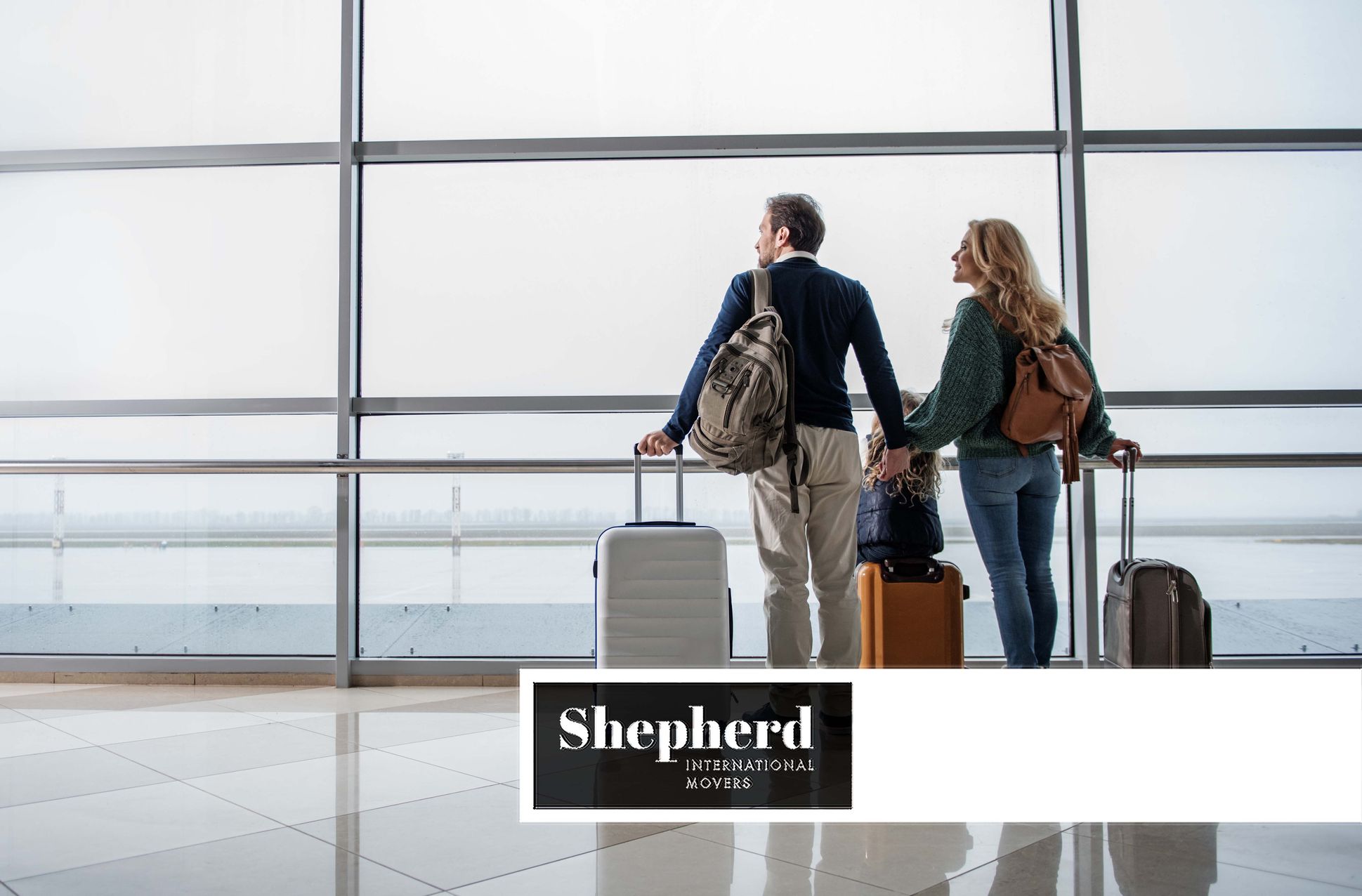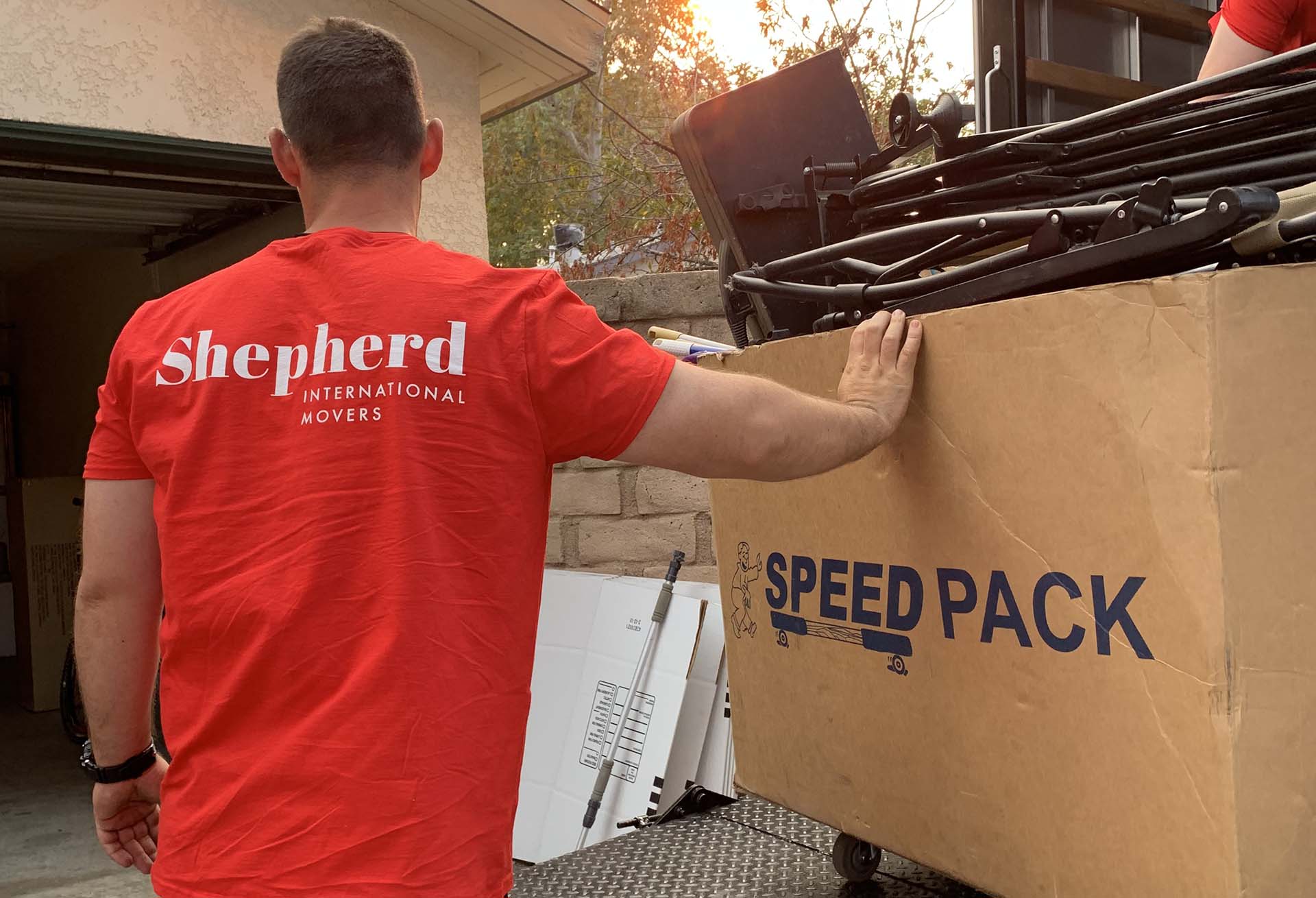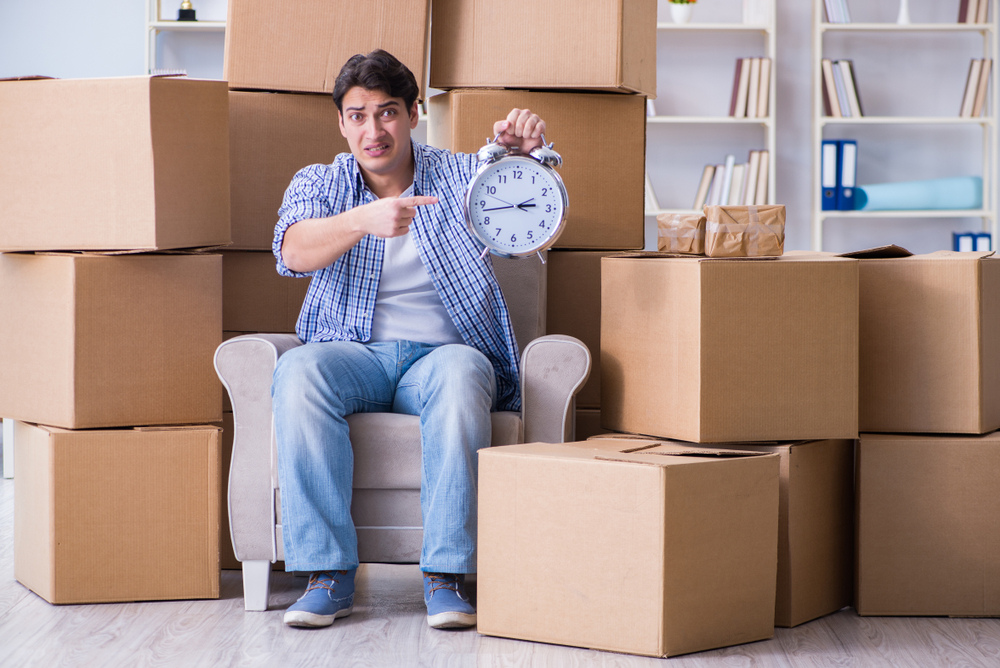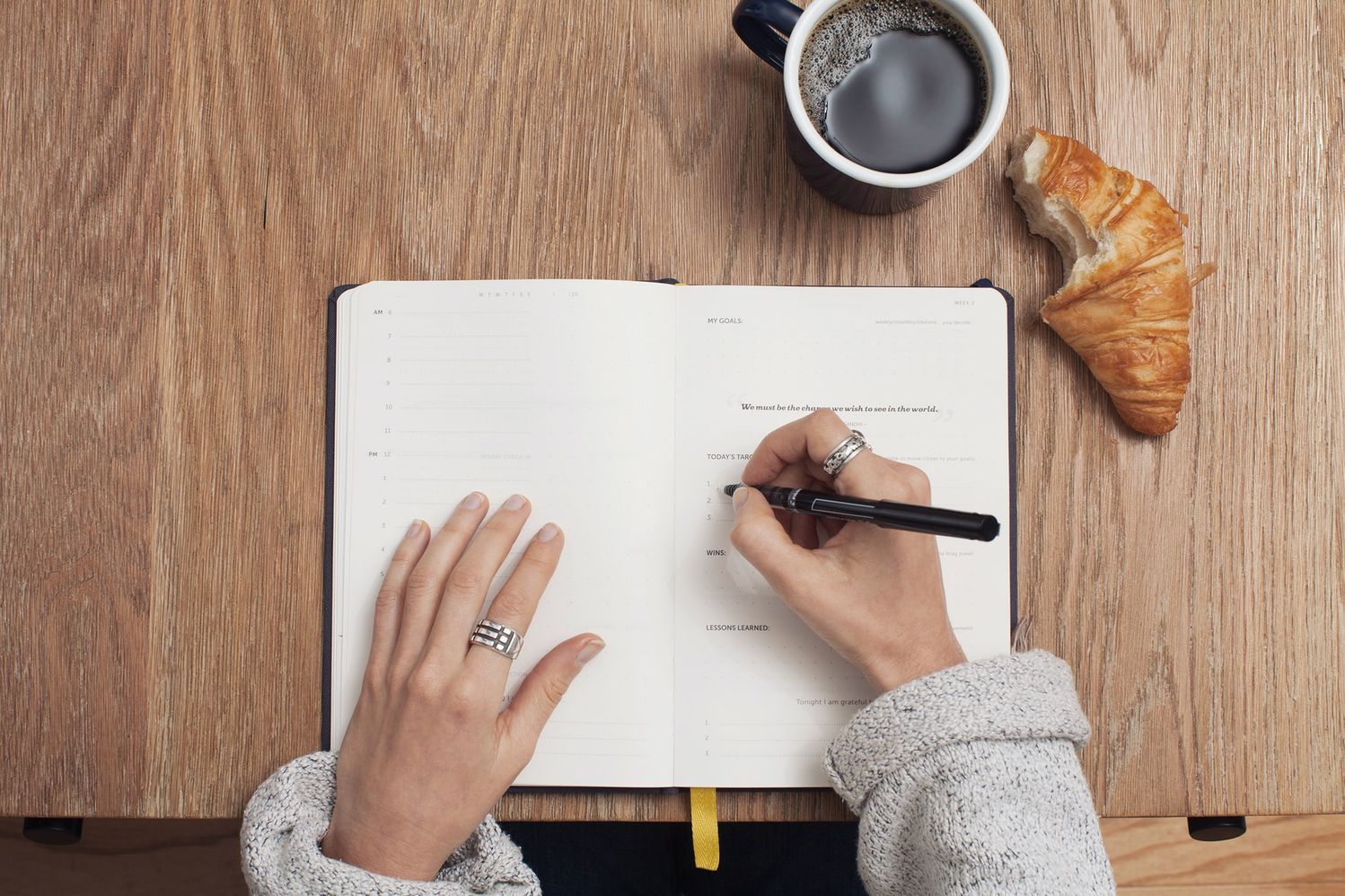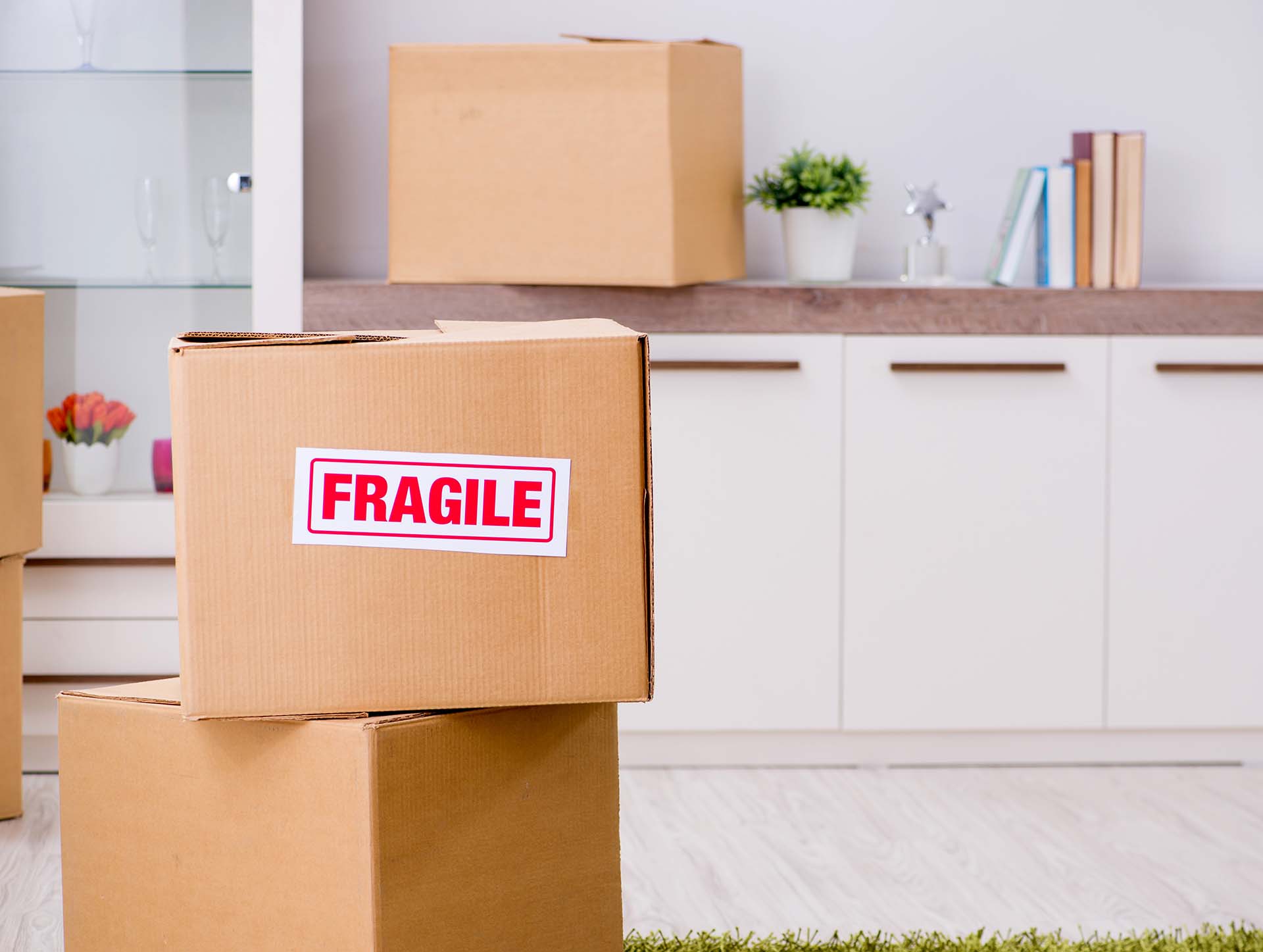

When it comes to moving overseas, the difference between a chaotic mess and a smooth transition can often be found in the small details. One of the best of those, and the simplest, is using moving labels for boxes. Let’s dive into the world of moving labels, showing you how to add a splash of fun to the otherwise mundane.
The Basics of Moving Labels for Boxes
The art of labeling goes beyond mere identification. It’s a strategic process that helps you relocate efficiently. The first step is selecting the best-size boxes for relocating your stuff. Once you have the right boxes, the real magic begins with categorizing and labeling them.
Each label should clearly state the contents, destination room, and handling instructions. This method not only simplifies the unpacking process but also ensures that fragile items receive extra care.
Using a color-coding system can further streamline the process, allowing movers (or yourself) to quickly identify where each box belongs in your new home. Remember, effective labeling is like a roadmap for belongings, guiding them safely and orderly to their new destination.
What Types of Moving Labels Are There?
When it comes to home relocation labeling, the variety of options can be as diverse as a relocation to-do list. First, there are pre-printed labels, which are a hassle-free choice, offering designated spaces for essential information like contents and room destination.
Then, color-coded labels come into play, adding a layer of visual simplicity to the relocation process. They allow you to assign a color to each room, making it easy for movers to spot where each box goes at a glance. For those who prefer a personal touch, DIY label options are a creative alternative.
You can design and print labels at home, tailoring them to your specific needs and adding a unique flair to the containers. Each of these label types serves a crucial role in making the moving process organized and efficient, ensuring everything is in its right place from the get-go.
What Materials Are Needed for Effective Labeling?
For effective home relocation labeling, especially when moving overseas, certain materials are indispensable to ensure a smooth relocation day. Start with permanent markers, as they are essential for writing on labels and boxes, offering legibility and durability against the elements.
Next, label stickers are a must-have. They can be either pre-printed or blank for custom writing. These stickers should be strong enough to adhere to all surfaces and withstand the rigors of moving. Color-coded tape is another valuable asset, offering an additional layer of organization and visual cues for movers.
This tape can be used to seal cardboard containers while also indicating the room or priority of the contents inside. Together, these materials form the toolkit for a well-executed labeling strategy, ensuring that each box is not only well-packed but also clearly marked for its journey.
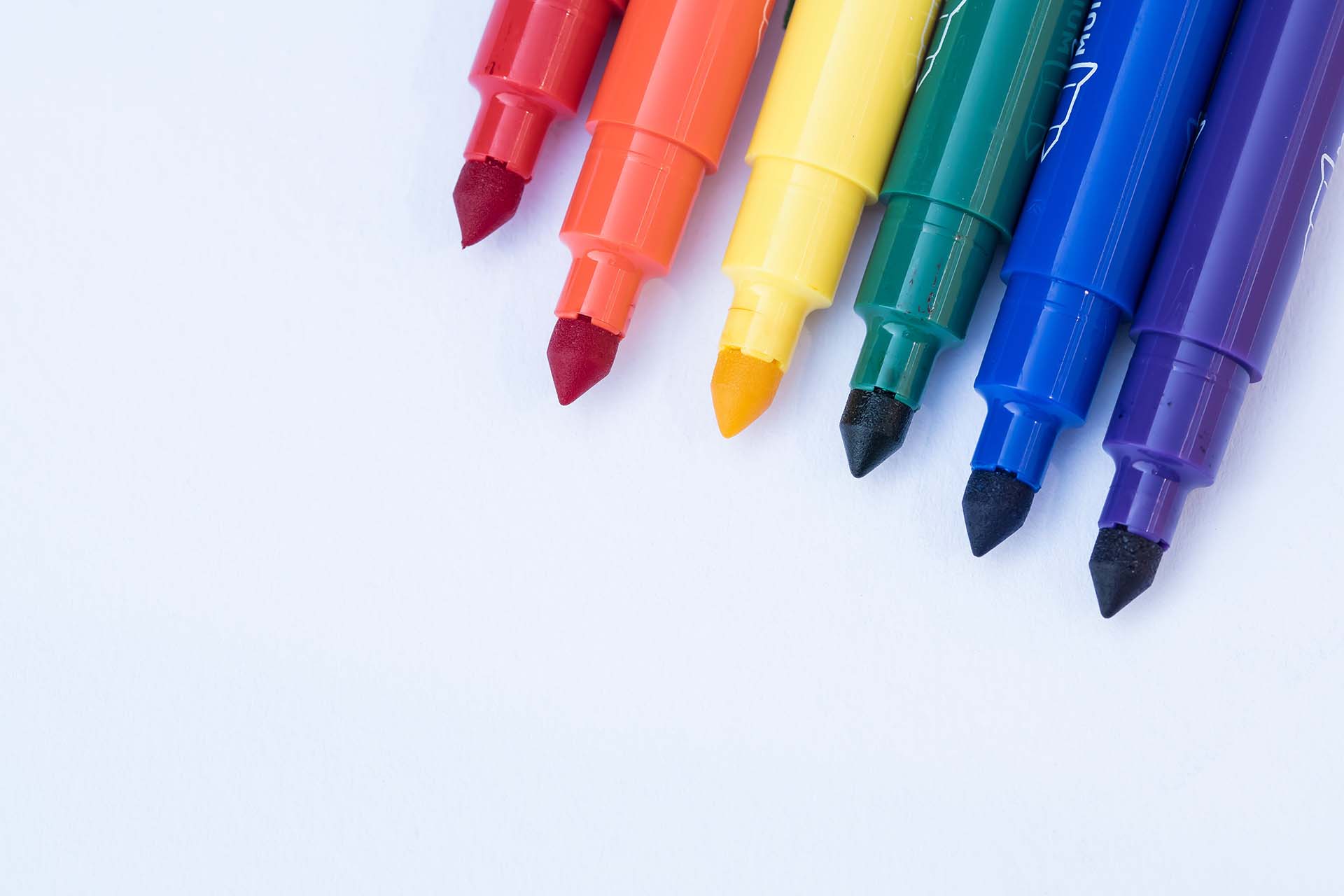
How to Plan the Labeling Strategy
Developing an effective strategy for relocation labeling solutions is crucial for avoiding the chaos of a last-minute relocation rush and mitigating common relocation mistakes. The key is to start early, allowing ample time to decide on the categorization of items.
Assess the volume and variety of belongings, determining the best method for sorting and identifying them. This process includes deciding on the types of stickers or tags to be used and whether additional materials like color-coded tape will be necessary.
Create a Labeling System
To create an effective labeling system that suits individual relocation needs, it’s essential to integrate this task into the broader relocation checklist. Begin by categorizing belongings according to room, usage, or priority.
Each category should have a distinct identifier, whether it’s a specific color, number, or symbol. This system not only helps prepare for movers but also aids in keeping track of items throughout the transition. Labels should be clear, concise, and placed consistently on each box.
Use Color-Coding for Easier Identification
Incorporating a color-coding system into box categorization for moving can significantly contribute to less relocation stress. This method involves assigning a specific color to each room or category of items, such as blue for the kitchen and green for the living room.
Color-coded stickers, tape, or tags make it easy to identify the destination of each box at a glance, streamlining the process for both the movers and those unpacking. This approach not only speeds up the sorting and placing of boxes in the new location but also reduces the time spent searching for specific items.
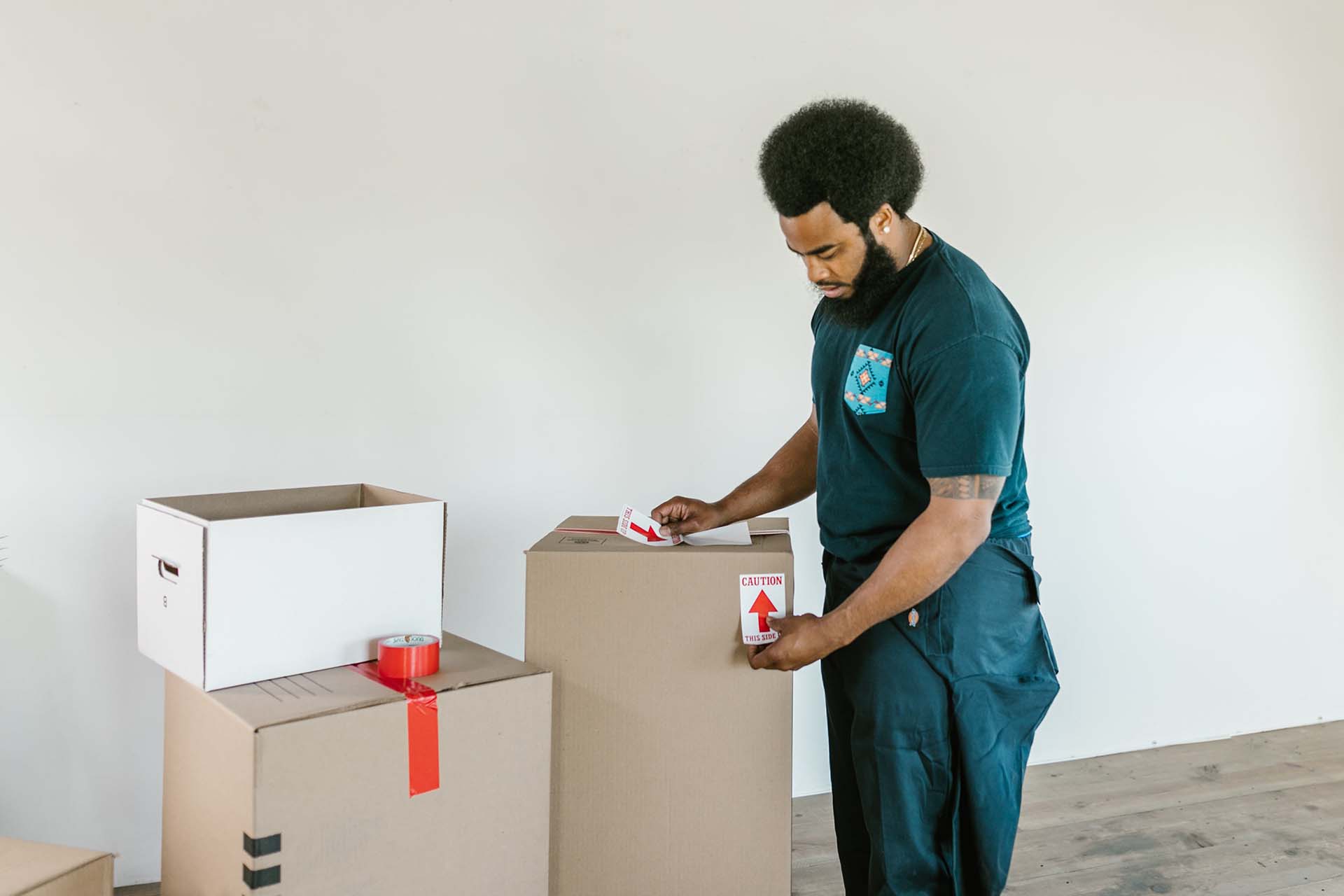
What is the Most Effective Way to Label Boxes?
The most effective way to label boxes intertwines with efficient moving inventory management. It begins with a thorough assessment of belongings, deciding what to keep and what to part with by throwing it away or donating it to The Salvation Army. Once this is established, items like plates, dishes, books, and furniture should be sorted into designated categories.
Labels should clearly state the contents of each box, alongside specific handling instructions, such as “Fragile” or “This Side Up,” to ensure safe transportation. Moreover, incorporating a numbering system can enhance organization. For instance, numbering boxes and keeping a corresponding inventory list makes tracking items more manageable, ensuring nothing is misplaced.
What Are the Best Labeling Techniques?
Do you want to move safely, yet knowing that when you arrive at the new destination, a flawless unpacking process awaits you? Don’t have any fear of relocation because, along with stress-free packing techniques, you should know about the best labeling techniques. Here are some strategies that are simple yet perfect:
- Use durable, waterproof markers to ensure labels remain legible throughout the journey.
- Label on multiple sides, as that makes it easier to identify boxes from any angle.
- Include handling instructions if there are fragile items in the box or if the box needs to be kept upright.
- Be descriptive, and rather than just “Kitchen,” specify contents like “Cookware” or “Utensils.”
- Use stickers for special attention, as bright stickers can draw attention to boxes that require immediate unpacking or special care.
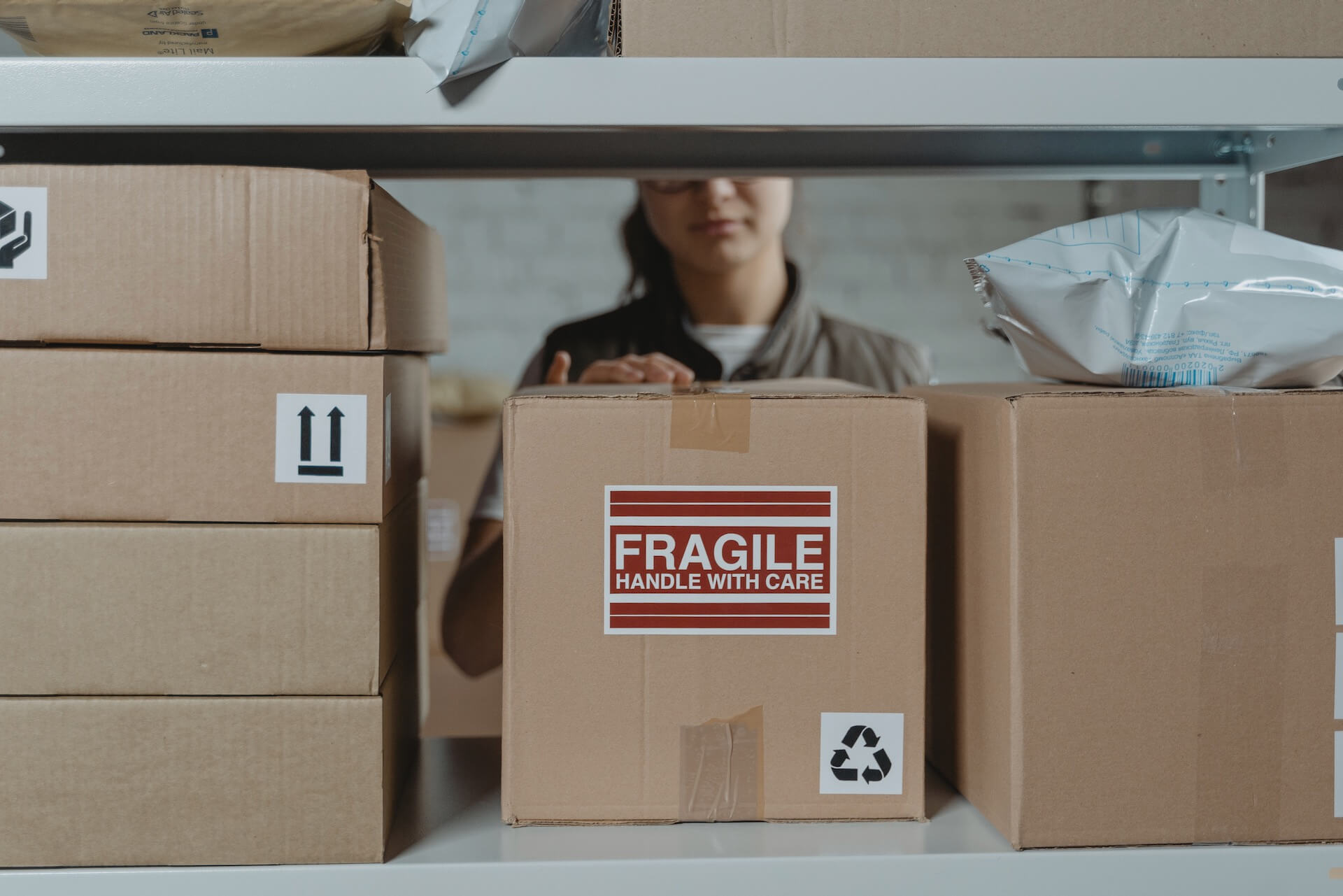
Labeling for Special Items
When it comes to labels for moving boxes containing special items, extra care and precision are necessary, particularly in the context of relocation day preparation. Items that are fragile, valuable, or unusual require distinct labeling to ensure they are handled with the appropriate care.
For instance, artwork, musical instruments, or collectibles should be marked as “Fragile” and may need additional descriptive labels about their handling and orientation. It’s also crucial to take into account environmental factors, like temperature sensitivity, when relocating such items internationally.
The labels should be bright and easily distinguishable, possibly using a different color scheme or sticker design to stand out from regular boxes. This level of detail not only protects these items but also aids movers in prioritizing their handling and placement, ensuring they receive the attention they need during the transit.
Labeling Electronics and Appliances
When labeling boxes containing electronics, it’s essential to include notes about their disassembly and reassembly, indicating which parts are packed together. For instance, cords should be labeled with the device they belong to, and any screws or small components should be stored in clearly marked bags.
Special care instructions, such as “Keep Upright” or “Handle With Care,” should be prominently displayed. Additionally, indicating the room where each item will be placed in the new location can expedite the setup process. This approach ensures that all components arrive safely and are easily accessible and reassembled, reducing setup time and avoiding damage.
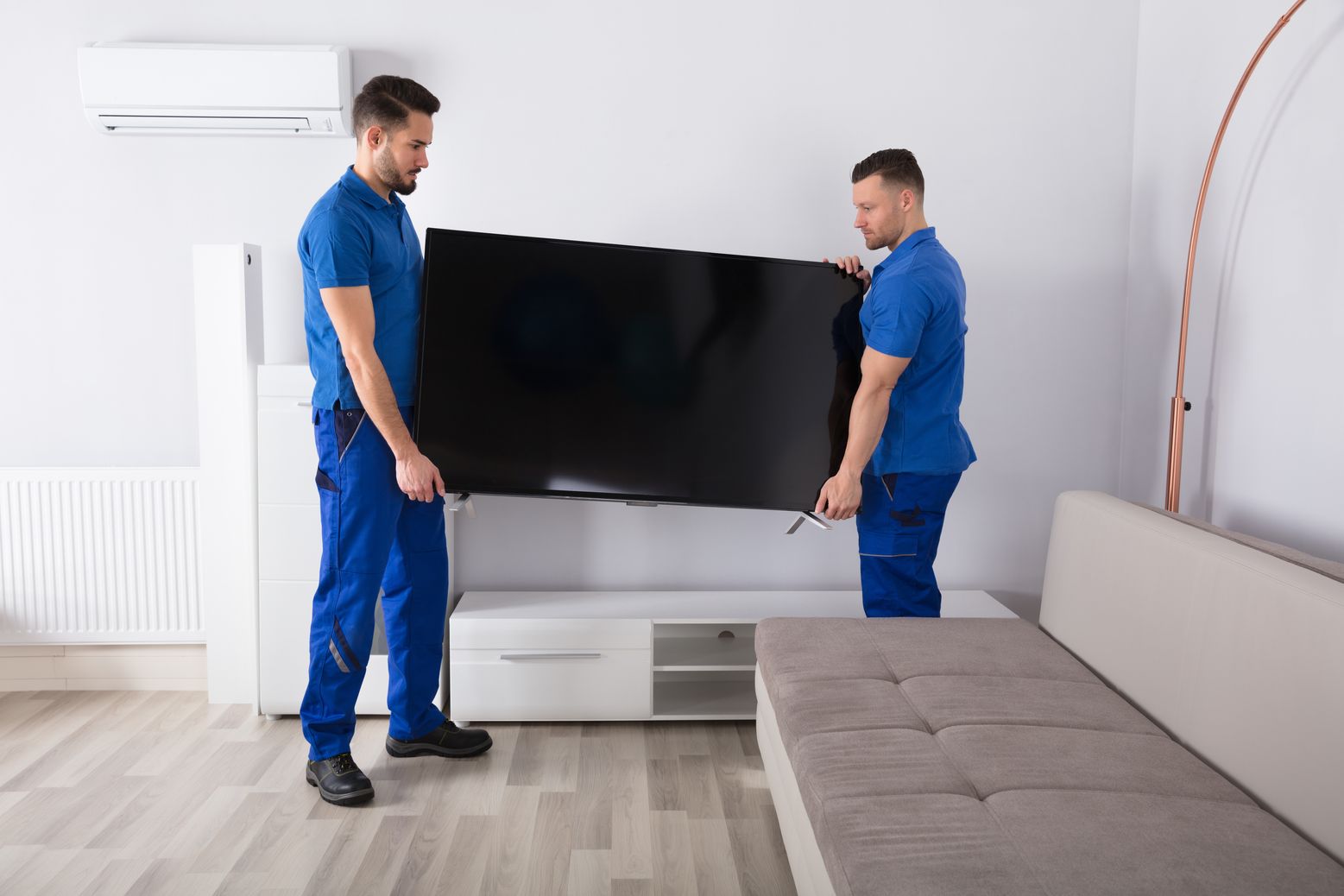
How to Coordinate With International Movers
Coordinating with an international moving company requires clear communication from the moment when you invest in international relocation services. It’s essential to inform the movers about your specific labeling system prior to relocation day. This discussion should include the color-coding scheme used, the significance of any symbols, and the handling instructions for special items.
Providing the movers with a copy of the inventory list can also be incredibly helpful, as it allows them to cross-reference the box numbers with their contents and destination. On the day of the move, take some time to walk the movers through the packed items, highlighting any boxes that require extra attention or are to be loaded last for easy access.
Arrived Finally? Unpack With Ease
After moving abroad, the task of unpacking can seem daunting, but having an effective unpacking plan in place can significantly streamline the process. Begin by identifying the rooms that need to be functional first, like the bedroom, bathroom, and kitchen. If the boxes were labeled according to room and content during packing, locating what you need becomes much simpler.
Tackle one room at a time to avoid feeling overwhelmed and to see tangible progress. It’s also helpful to have an essentials box, which is ideally packed last and contains items you need immediately, like toiletries, basic cookware, and bedding. This strategy allows you to take your time unpacking, reducing anxiety and making the process of settling in more enjoyable.
How to Prioritize Boxes for Unpacking?
The labels on boxes are key to this process. Start with boxes marked as ‘Essentials’ or ‘First Day’ – these should contain items you need immediately, such as toiletries, basic kitchen items, and a change of clothes.
Next, focus on setting up bedrooms and the bathroom, as having a place to sleep and personal care items readily available will make the first few days much more comfortable. Boxes containing items for the living and dining areas can typically be unpacked later.
Prioritize boxes with labels indicating their urgency or room destination, and consider leaving items that are not immediately necessary, like decorative pieces or seasonal clothing, for last. This approach helps in creating a functional living space quickly, making the adjustment to life in a new country smoother and less overwhelming.
Hire the Most Reliable Movers – Shepherd International Movers
At Shepherd International Movers, we recognize the critical role that labels play in ensuring an efficient relocation process. The strategic use of labels greatly enhances inventory management, reduces the risk of misplaced or damaged items, and streamlines the unpacking process, particularly when moving internationally. Our commitment to providing a seamless relocation experience is bolstered by these meticulous organizational practices. Contact Shepherd International Movers for your next international relocation, and let us provide you with excellent moving and packing services.
What Are the Most Effective Types of Labels to Use for Moving Boxes?
For organizing boxes, pre-printed stickers with clear, bold writing are highly effective. These often include checkboxes or spaces for writing contents and special handling instructions. Color-coded stickers are also beneficial, allowing for quick visual sorting by assigning a specific color to each room or item category.
How Can I Create a Labeling System That’s Easy for Everyone to Understand?
To establish a system that’s easily interpreted by everyone, consistency is key. Using a uniform color scheme or set of symbols across all boxes can be effective. An accompanying guide or chart explaining the meaning of each color or symbol helps maintain clarity for everyone involved.
What’s the Best Way to Label Boxes With Fragile Items?
For boxes with delicate contents, using bright, easily noticeable stickers or tape that clearly states “Fragile” is essential. Placing these indicators on multiple sides of the box ensures visibility, regardless of how the box is carried or loaded.
How Do Moving Labels Help With the Unpacking Process?
The use of organized stickers aids significantly in the unpacking process. It allows for quick identification of box contents and their intended room, making it easier to prioritize which boxes should be opened first and where to place them in the new location.
What Should I Do if a Box Contains Items for Multiple Rooms?
For boxes containing items destined for different rooms, detailed notes on the sticker indicating the specific contents and their respective room destinations are helpful. Alternatively, using a divided color-coding system on one box can also indicate multiple destinations.
How Do I Ensure My Movers Follow My Labeling System?
To make sure movers adhere to the established system, a brief overview of the system with them prior to the start is effective. Providing a printed guide or chart can also be helpful. Clear communication and easy-to-understand indicators will assist in ensuring they follow the system as intended.



